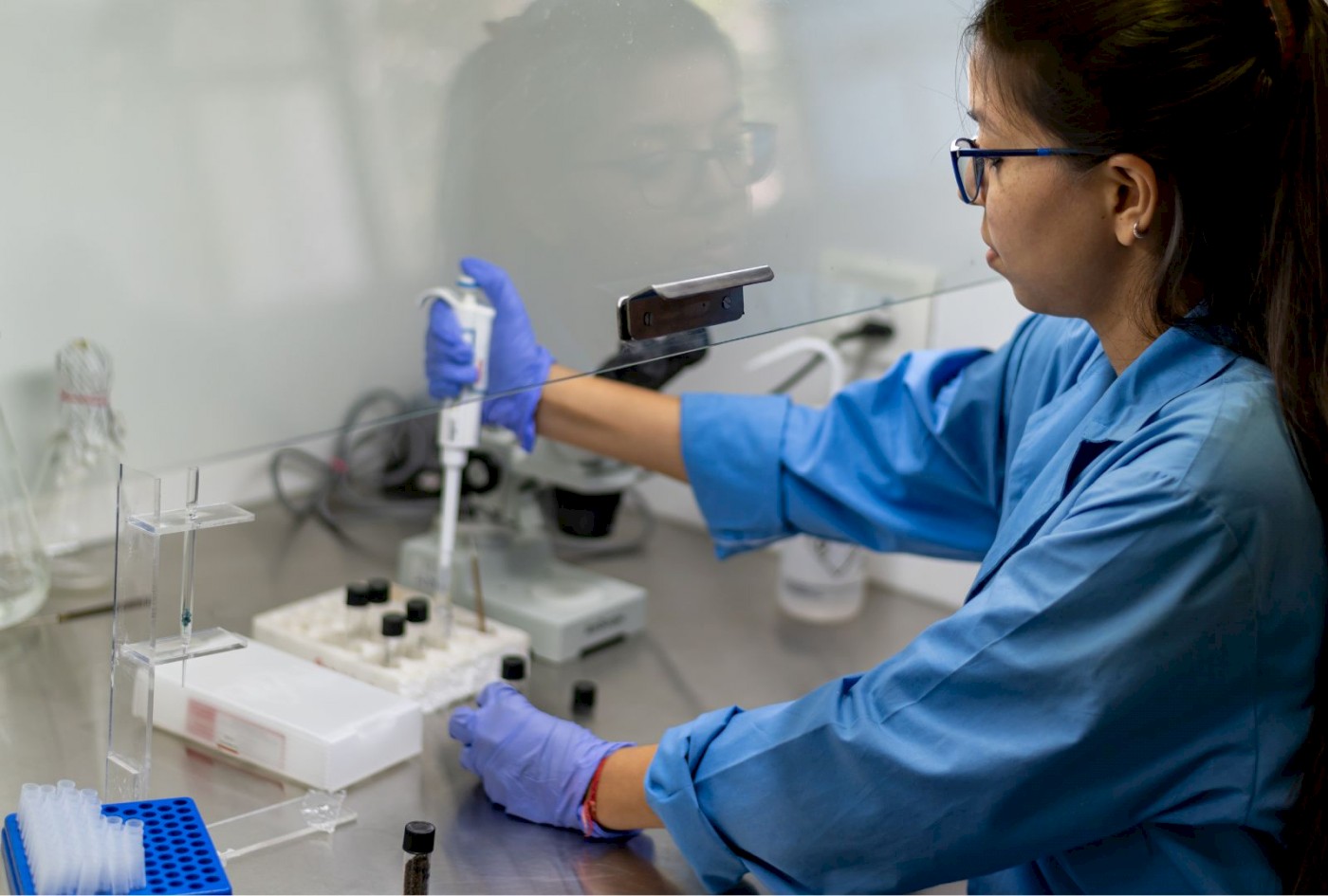
Ahmedabad Professor Subhash Rajpurohit, along with a global team of scientists, developed a new pedagogic module for in-classroom DNA extraction using commonly available materials.
“Science should be for all, yet regrettably, it is not. There are many constraints that our education system and students face - lack of resources and funding, scarcity of laboratories to conduct experiments, the unavailability of advanced instruments, and limitations in teaching aids, among many other challenges. Our new pedagogical approach is a step towards making science more accessible,” says Subhash Rajpurohit, Associate Professor, School of Arts and Sciences, about his new research work.
Deoxyribonucleic acid (DNA) is the molecule that carries genetic information for the development and functioning of an organism. All living organisms have DNA within their cells. DNA plays a crucial role in transferring genetic and hereditary information from biological parents to offspring. Characteristics such as eye colour, hair type, facial features, blood group, or certain genetic conditions, such as diabetes or thalassemia, are often passed on from one generation to another because of DNA.
Many people know what DNA is or have heard about DNA. Many will also be aware of the popular double helix structure of the DNA molecule. But many will have never seen the DNA for themselves. Professor Rajpurohit, along with seven other scientists, has developed a standardised method to extract DNA from plant cells, and students can see precipitation happening in front of their eyes. He shares, “When we say DNA, often people associate it with something fancy and advanced lab equipment that needs proper handling and specific domain knowledge. But what we have developed here is easy and can be done by anyone, anywhere. You can even do this simple experiment in your kitchen”
“Take a few strawberries in a plastic bag and crush them with your hands. Crushing will break the cell walls and release the DNA from the nucleus. Then add about 30ml of tap water and a pinch of salt to this mash and mix them all gently. Next, pour the liquid through a filter into a transparent plastic cup. The filter will remove the large solids, and the liquid collected into the cup will have the DNA. Now add a few drops of dish washing liquid detergent (0.1 mL) to this filtration and gently mix. This disruption of lipids helps solubilise the cellular and nuclear membranes in an aqueous solution, releasing the chromatin from the nucleus.
Then pour alcohol over the solution, which will cause the DNA to precipitate from the solution and form a long mucus-like thread which will be easily visible.”
Professor Rajpurohit mentions that the experiment can also be adjusted to make it easy or complicated depending on the learning level of the students. He adds, “This DNA extraction is a great introductory tool to get students interested in science and inspire them to explore DNA and genes study. The students can get creative with this tool. They can try adding more or less salt or water to see if the experiment works. We have designed the experiment in a way that in place of alcohol, students can even use an alcohol-based sanitiser, which is more safe.”
This education pedagogic tool is now available in 10 languages, including French, Urdu, Hindi, Japanese, and Mandarin. This has opened up the resources to about 2.7 billion people worldwide.
Read the full research paper here. Author(s): Danica C. Levesque, Athena L. Wallis, Jenna Daypuk, Jesse Petahtegoose, Mitchell Slobodian, Allie K. Sutherland-Hutchings, Ian Black, Jessica M. Vélez, Abdullah Abood, Marah H. Wahbeh, Romina B. Cejas, Angel F. Cisneros, Laerie McNeil, Kento Konno, Lissa McGregor, Birha Farooqi, Carla Bautista, Subhash Rajpurohit, Divita Garg, Jiechun Zhu, Guangdong Yang, Solomon Arthur, Thomas J. S. Merritt